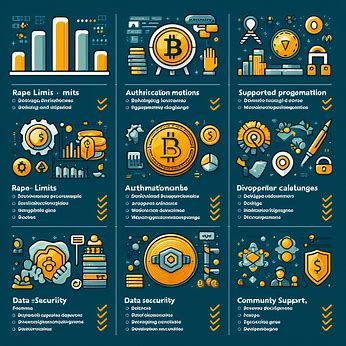Two main types of exchanges dominate the crypto market. These are peer-to-peer (P2P) and centralized exchanges. While both facilitate the buying and selling of cryptocurrencies, they operate on fundamentally different principles. In this article, we’ll take an in-depth look at P2P and centralized crypto exchanges, examine their key features, advantages, disadvantages.
Understand the Basics
Peer-to-peer (P2P) exchanges
P2P exchanges provide a platform for buyers and sellers to interact directly, without the need for a central authority. These exchanges often utilize escrow services to ensure the integrity of transactions. Examples of popular P2P exchanges include LocalBitcoins, Paxful, and Bisq.
Centralized exchanges
Centralized exchanges act as intermediaries between buyers and sellers, facilitating trades and providing a user-friendly interface. These exchanges maintain custody of users’ funds and require account verification for trading. Some well-known centralized exchanges are Coinbase, Binance, and Kraken.
Key Differences
1. Custody of funds
P2P exchanges: In a P2P exchange, users maintain control over their funds throughout the trading process. The exchange does not hold users’ cryptocurrencies, reducing the risk of large-scale hacks and thefts.
Centralized exchanges:Centralized exchanges take custody of users’ funds, which are held in the exchange’s wallets.
2. Privacy and anonymity
P2P exchanges: P2P exchanges often have less stringent identity verification requirements, allowing users to maintain a higher level of privacy and anonymity. Some P2P platforms even enable cash transactions for added privacy.
Centralized exchanges: Centralized exchanges typically require users to complete Know Your Customer (KYC) and Anti-Money Laundering (AML) procedures, which involve submitting personal information and identification documents. This reduces anonymity but helps exchanges comply with regulations.
3. Liquidity and trading volume
P2P exchanges: Due to their decentralized nature, P2P exchanges may have lower liquidity and trading volumes compared to centralized exchanges. This can result in slower trade execution and potential difficulties finding matching orders.
Centralized exchanges: Centralized exchanges generally offer higher liquidity and trading volumes, as they attract a larger user base. This leads to faster order execution and tighter spreads, which can be an advantage for active traders.
4. User interface and ease of use
Centralized exchanges: Centralized exchanges usually offer a more user-friendly and intuitive interface, making it easier for beginners to navigate the platform and execute trades. They often provide advanced trading features, such as margin trading and stop-loss orders.
P2P exchanges: P2P exchanges can have a steeper learning curve, as users need to familiarize themselves with the process of directly interacting with other traders. The user interface may be more basic, focusing on essential features like messaging and escrow management.
5. Security and hacking risks
P2P exchanges: Since P2P exchanges do not take custody of users’ funds, they are less attractive targets for hackers. However, users must still exercise caution when trading with counterparties and ensure they follow best practices for securing their personal wallets.
Centralized exchanges: Centralized exchanges are more vulnerable to hacking attempts due to their custody of large amounts of user funds. While reputable exchanges employ robust security measures, the risk of hacks and thefts cannot be eliminated entirely.
6. Regulatory compliance
Centralized exchanges: Centralized exchanges are subject to greater regulatory scrutiny and must adhere to strict KYC/AML requirements. This compliance helps legitimize the cryptocurrency industry but may limit access for some users.
P2P exchanges: P2P exchanges often operate in a gray area when it comes to regulations, as they facilitate direct trades between individuals. This lack of oversight can be appealing to some users but may also attract bad actors.
7. Geographical restrictions and supported currencies
Centralized exchanges: Centralized exchanges may have geographical restrictions based on their regulatory licenses and partnerships. Some exchanges only serve specific countries or regions, limiting access for users in other parts of the world.
P2P exchanges: P2P exchanges generally have fewer geographical restrictions, as they rely on individual traders to determine their own trading limits and supported currencies. This can provide greater access to cryptocurrencies for users in regions with limited exchange options.
Read also: Top Platforms for Cryptocurrency Peer-to-Peer (P2P) Trading
Choosing the Right Exchange for Your Needs
- If you value privacy, anonymity, and control over your funds, a P2P exchange may be the better choice. However, be prepared for a more manual trading process and potential liquidity limitations.
- If you prioritize ease of use, advanced trading features, and high liquidity, a centralized exchange may be more suitable. Just be aware of the risks associated with entrusting your funds to a third party and the potential for geographical restrictions.
- P2P exchanges may focus on improving user experience, integrating decentralized escrow solutions, and expanding supported cryptocurrencies to attract more users.
- Centralized exchanges will likely continue to prioritize regulatory compliance, security measures, and insurance funds to build trust with users and legitimize the industry.
It’s also worth noting that many cryptocurrency traders use a combination of both P2P and centralized exchanges to maximize their options and mitigate risks.
Key Takeaways
- Peer-to-peer (P2P) and centralized exchanges are the two main types of cryptocurrency exchanges, each with distinct features and operating principles.
- P2P exchanges allow direct trades between users without a central authority, while centralized exchanges act as intermediaries and custody users’ funds.
- P2P exchanges offer greater privacy and user control over funds but may have lower liquidity and a steeper learning curve.
- Centralized exchanges provide a user-friendly interface, high liquidity, and advanced trading features but require KYC/AML compliance and expose users to the risk of hacks.
- P2P exchanges have fewer geographical restrictions and regulatory oversight, while centralized exchanges must adhere to strict regulations and may have limited access in some regions.
- When choosing between a P2P and centralized exchange, consider your priorities, such as privacy, ease of use, liquidity, and security.
- Many traders use a combination of both P2P and centralized exchanges to diversify their options and mitigate risks.
- As the cryptocurrency industry evolves, P2P exchanges may focus on improving user experience and decentralized solutions, while centralized exchanges will prioritize compliance and security.
Frequently Asked Questions
1. What is a peer-to-peer (P2P) crypto exchange?
A P2P crypto exchange is a platform that enables direct transactions between buyers and sellers without the need for a central authority. Users can interact with each other to agree on prices, payment methods, and other terms of the trade.
2. What is a centralized crypto exchange?
A centralized crypto exchange is a platform that acts as an intermediary between buyers and sellers, facilitating trades and providing custody for users’ funds. These exchanges offer a user-friendly interface and often require account verification for trading.
3. Which type of exchange offers more privacy and anonymity?
P2P exchanges generally offer more privacy and anonymity, as they often have less stringent identity verification requirements compared to centralized exchanges. Some P2P platforms even allow for cash transactions, further enhancing privacy.
4. Which type of exchange has higher liquidity and trading volume?
Centralized exchanges usually have higher liquidity and trading volumes due to their larger user base and more advanced trading features. This can result in faster order execution and tighter spreads.
5. Are P2P exchanges safer than centralized exchanges?
P2P exchanges are less attractive targets for hackers since they do not custody users’ funds. However, users must still exercise caution when trading with counterparties and ensure they follow best practices for securing their personal wallets. Centralized exchanges, while employing robust security measures, are more vulnerable to hacks due to their custody of large amounts of user funds.
6. Can I use both P2P and centralized exchanges?
Yes, many cryptocurrency traders use a combination of both P2P and centralized exchanges to maximize their options and mitigate risks. Diversifying your trading platforms allows you to take advantage of the strengths of each type of exchange while minimizing the drawbacks.
7. What should I consider when choosing between a P2P and centralized exchange?
When deciding between a P2P and centralized exchange, consider factors such as your privacy preferences, desired level of control over your funds, ease of use, liquidity requirements, and risk tolerance. Evaluate your priorities and trading needs to determine which type of exchange best suits your goals.










